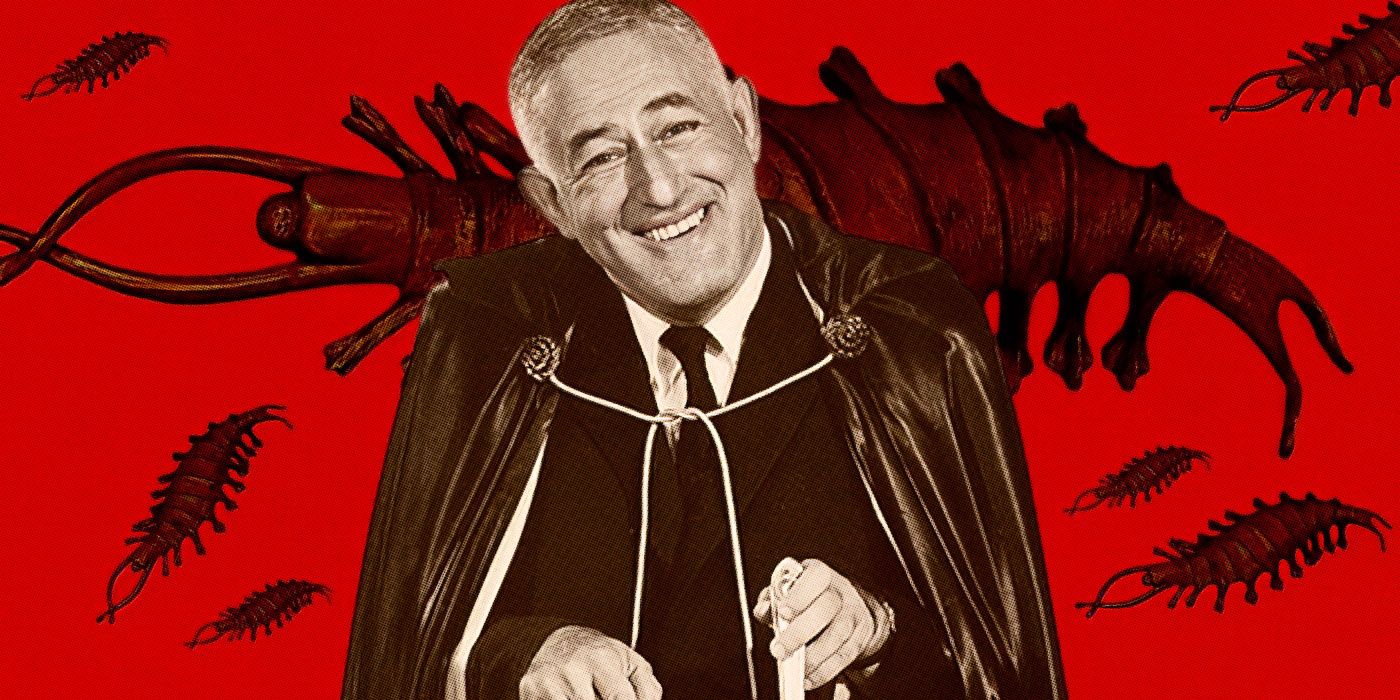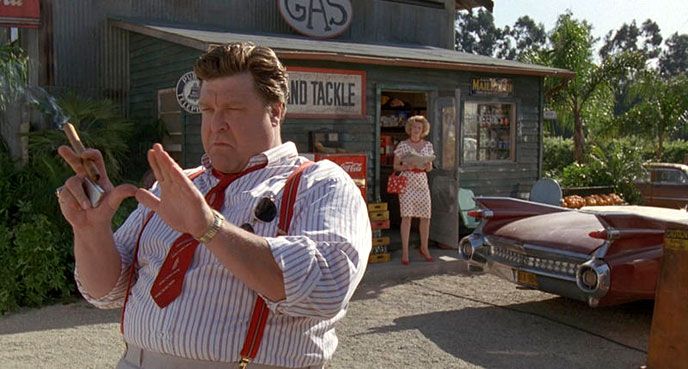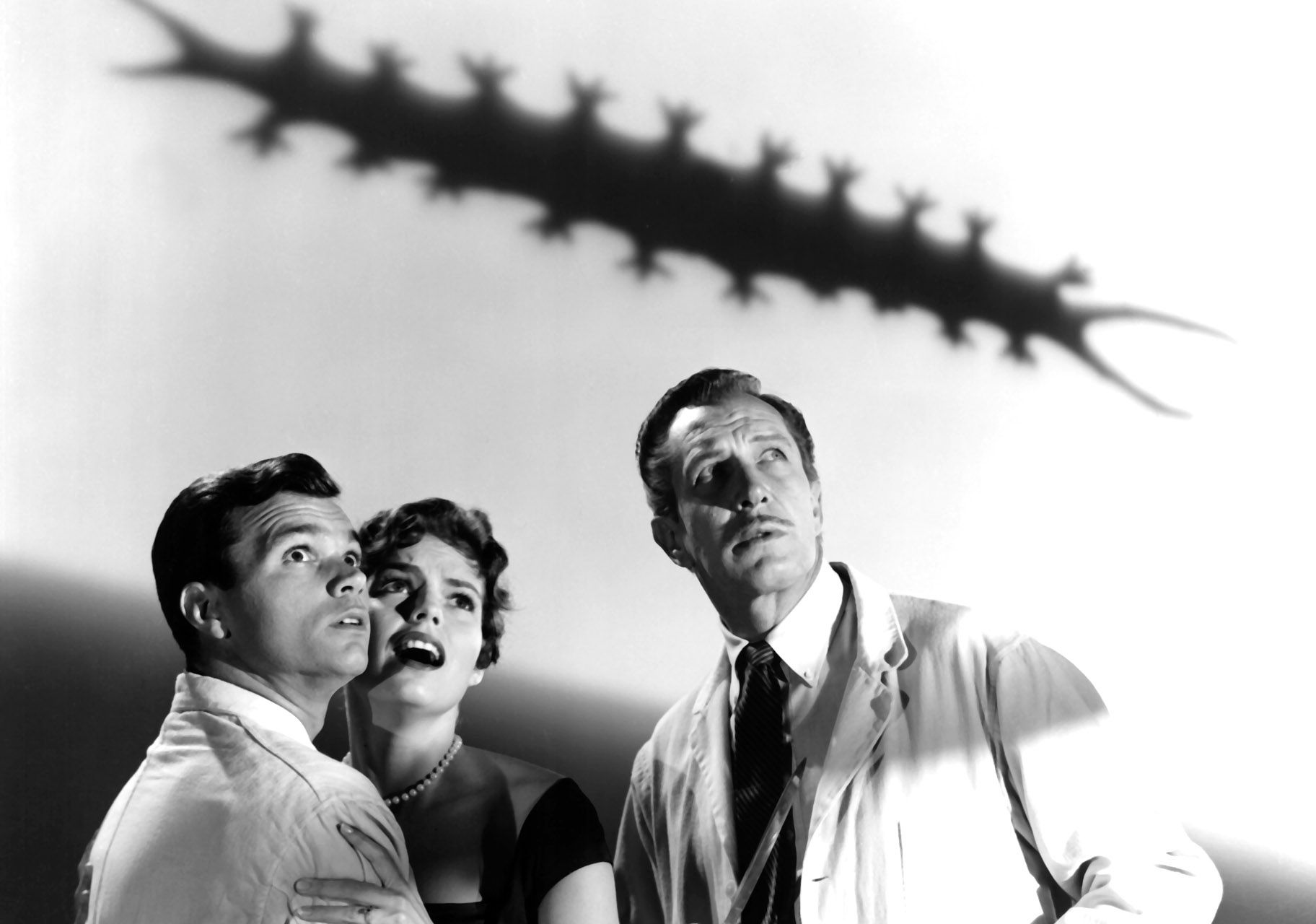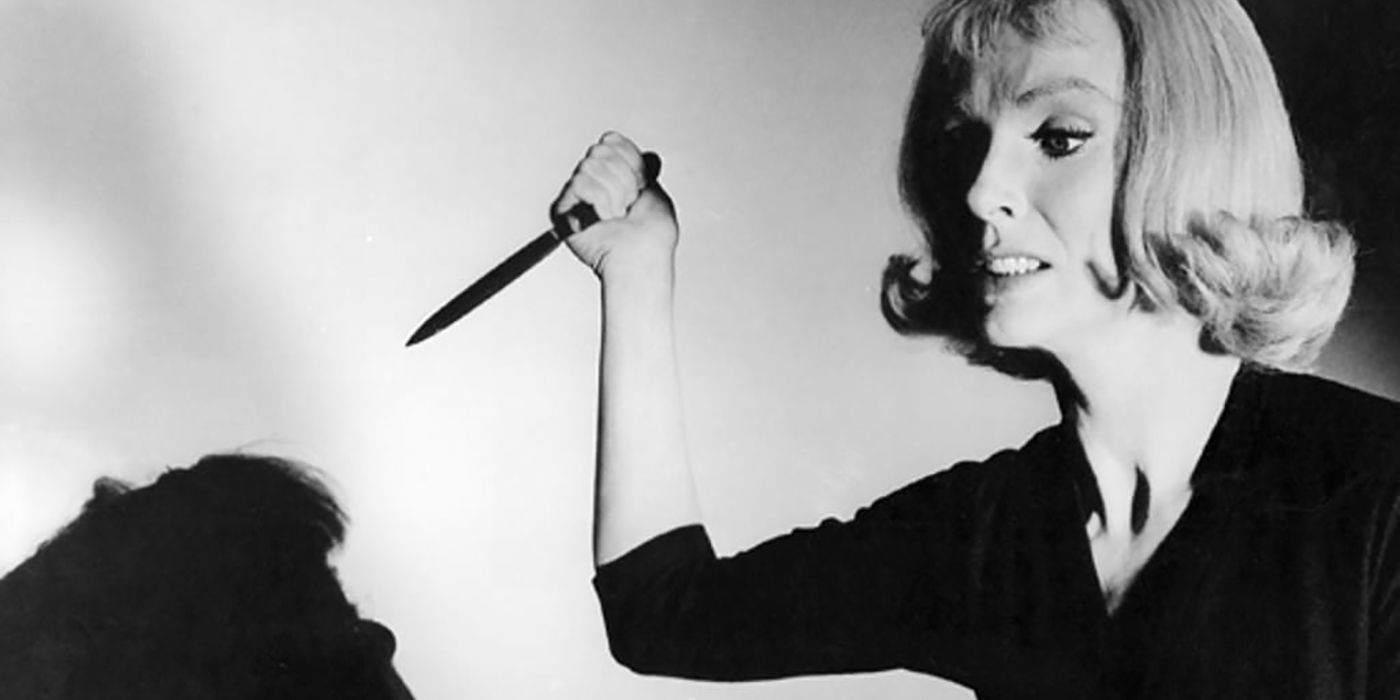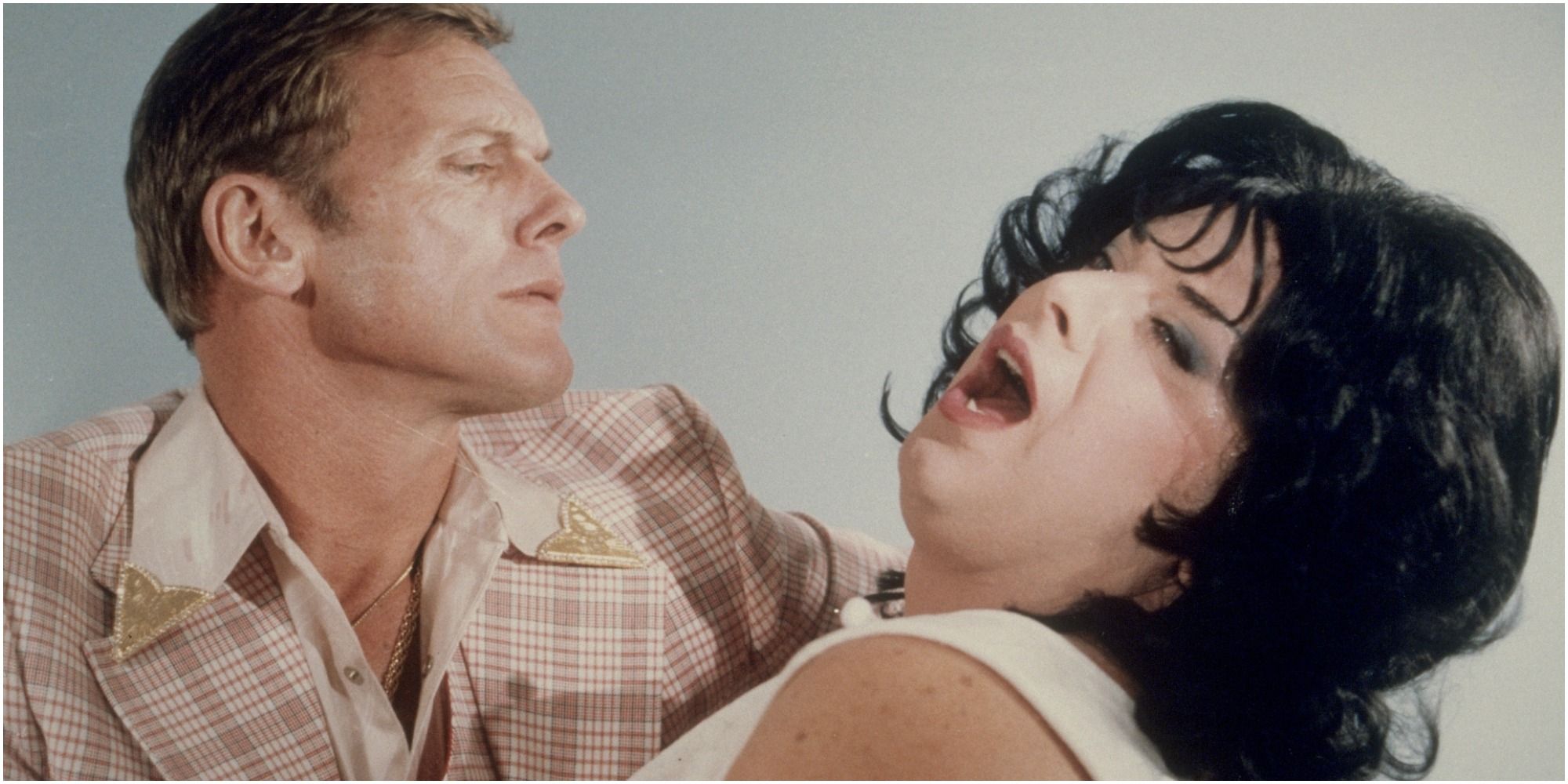There are many people who make films in the pursuit of spectacle, to shock and amaze audiences. But one man amazed audiences by literally shocking them, and he is one of the greatest showmen in cinema history.
The History of William Castle
William Castle, born William Schloss Jr, had spent the majority of his life surrounded by theater. After seeing Bela Lugosi play Dracula on stage at 13, he knew that fear and shock would be his calling. After getting a recommendation from Lugosi himself to work behind the scenes of the touring production of Dracula, Castle dropped out of school at 15 to work on the stage. He did everything from acting to working as a stagehand, getting training on how to get the biggest reactions from the crowd. From the stage he moved to the Hollywood studio system at age 23, where he would find his true calling in directing B-Movies.
His backstory alone is good enough to make a film out of, though his likeness has already inspired one director. Joe Dante created a character in Castle's likeness for his 1993 film Matinee: Lawrence Woolsey, played by John Goodman. Needless to say, his legacy speaks volumes, influencing many from John Waters to Alfred Hitchcock. But it was only when he left Columbia studios and went independent where his true star as a consummate showman and crowd pleaser would shine.
On their own, are his most famous films, House on Haunted Hill, Thirteen Ghosts, and The Tingler, good movies? Well, it certainly depends on your definition of what a good movie is. As works of horror cinema, they're not A24 style works of art, with deeper societal themes that will leave you deeply haunted long after you leave the cinema. They're the corniest of corny, low budget B-Horrors only slightly elevated when the great Vincent Price makes an appearance. No, they are not art. They are fun to watch with your friends even now, but it would've been way more fun to see in cinemas at the time.
The Gimmicks Of William Castle
The real art of Castle's movies were not in the film itself, but in its gimmicks, the brilliant, wacky ideas of audience and cinema participation that would come with every movie. The gimmicks are what he is truly remembered for, even though he made many films and comparatively few had these gimmicks when you look at his extensive body of work. They didn't take very much, a costumed staff member here, a scratch and sniff there, but it would give the audience a memorable experience, and more importantly, it would sell lots of tickets.
In 1958, he started off with a bang, mortgaging his house for the film Macabre and putting in place his very first gimmick. To each audience member he would give a thousand dollar life insurance certificate, just in case they happened to be scared to death. Actresses in nurse costumes and hearses would be stationed in and around the cinema, extra precautions, because the film was so frightening. Macabre was a hit, and he didn't stop there. Next came perhaps his most famous film, House on Haunted Hill, the first to include Price and set in a mysterious haunted house. This time, the gimmick was rigged up monsters, skeletons with glowing red eyes floating across the ceiling of the cinema, target practice for kids with soda cans and popcorn boxes, but that was almost part of the fun.
There's a lot of exaggeration about The Tingler, which I'm sure Castle himself would have loved. No, they didn't really shock the audience, not with electric chairs, but a facsimile was used that we still selectively see today. Vibrating motors were put in certain seats of each theater. At the cue that a Tingler had gotten loose in the audience, and was aiming to bury itself in someone's spine, the selected seats would get a little jolt, similar to the vibrations one would feel at a 4-D cinema. John Waters once wrote that he would seek out these chairs specifically for the full experience. Thirteen Ghosts has a similar misconception, 3-D wasn't used, it was more so a red/blue filter that each audience member would be given, needing to look through the red cellophane to see the ghosts, using half the technology for double the effect.
'Homicidal': William Castle's Greatest Gimmick?
Then there was the coward's corner and fright breaks of 1961's Homicidal, hearkening back to Macabre by taking preventative measures for us chickens out there. You had 45 seconds to leave the theater in case you didn't want to watch the scary parts, and you would be led to what is essentially a naughty corner for cowards, where you'd experience a small parade of humiliation, which of course ended with you having to sign a yellow form stating that you were a "bona fide coward." You see these "chicken corners" sometimes on older roller coasters, if you step off before it starts — don't ask how I know that. Mr. Sardonicus would heavily involve audience participation with a poll for the ending: Do they want to kill or spare the villain? And the appropriate ending would be rolled after counting votes from the live crowd; apparently, no one chose mercy, though Castle claimed it was always an option.
Even when he was told to not use gimmicks, little gag gifts themed to the movie were still given out, showing how dedicated Castle was to the bit. This was his legacy, after all. So, where do we see the fossils of William Castle and his gimmicks? And should they still be used today?
The Legacy Of William Castle
Castle-like gimmicks have faded over the years for many reasons, largely due to costs. John Waters offered scratch and sniff "Oderama" cards with his film Polyester, as a direct tribute to Castle. Festival screenings of Lucky McGee's The Woman handed out vomit bags, "just in case."
The only theatrical gimmick to sustain into the 21st century was 3-D, or the further extended IMAX. The fully immersive experience of the film truly jumping at you and pulling you in is still a draw, especially for large blockbusters and genre movies. With the advent of home surround sound and HD visual even that, I've noticed, has been advertised less and less in recent years. As Shrek 4-D closes at Universal Studios, and 3D TVs quickly going out of fashion, we may see the death of all gimmicks in years to come.
Audience participation is even more niche, a cult-classic practice only used for certain movies, most famously The Rocky Horror Picture Show and its shadow casts and talk-backs, and recently with RRR. Audiences do immerse and participate with movies still, but it is usually on their own terms, riffing with friends, singing along to a musical, but there's never been anything like what Castle did for a long, long time.
This should absolutely change. Cinema, and especially horror cinema, has changed dramatically throughout the years. Evolving rapidly into something that at times can be deeply experimental, so why not experiment further? What would frighten an audience more than true immersion into a picture? After all, the world is not short on haunted houses and scare actors who make it their business to frighten patrons. We seem to be looking back a lot, onto older genres, older ideas and thinking: What can we do for this now? I think we ask the same thing for the brilliant William Castle, and what he gave to the horror genre.

